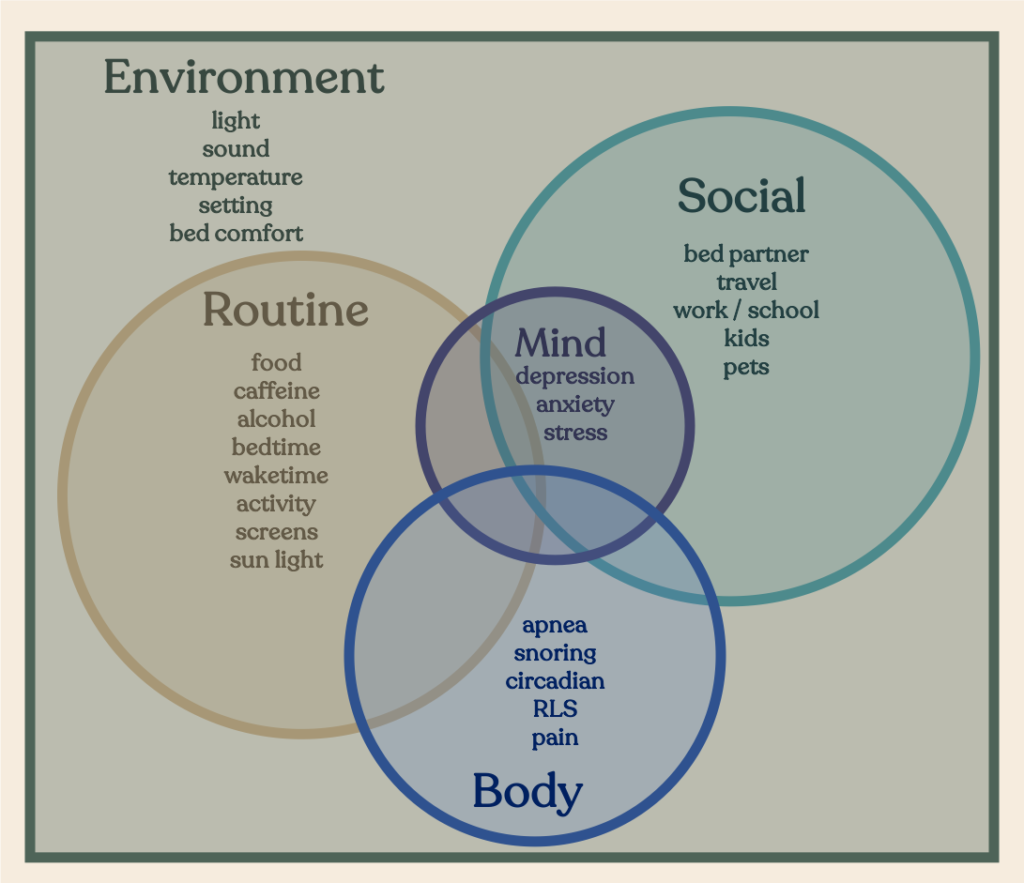(Noise • Light • Interior Layout)
Sleep isn’t just influenced by our internal biology and thoughts – it’s also affected by many external forces, including the space around us. In fact, our sleep environment often triggers biological functions that help us fall asleep, stay asleep, or wake up. The environment sleep factor describes how external physical properties like noise, light and the materials you are in contact with impact your sleep. Whether it’s the bedroom at home, a family member’s guest room, or a cabin at a rural getaway – our environment affects our sleep. For a moment, just think of those three spaces we listed – the bedroom at home, the guest room, and the cabin. Each one of those spaces is going to have different sounds, temperatures, types of light, and levels of comfort. And, those differences (however slight they may seem) can make or break our sleep quality.
How we assess the environment sleep factor
Many studies have shown just how much our environment affects our rest. In 2017, researchers found that a few days of camping (and avoiding artificial light) helps tune our bodies to a more natural circadian rhythm. Another study found that bedroom temperature impacts sleep quality even more than noise. And, in Somn’s own research, we saw that the frequency of nightmares correlates with uncomfortable beds.
Explore more

There are many simple things you can do to make your environment more sleep-friendly. Start by trying to make the space cool and dark. If it’s too costly to run the A/C, try a cooling mattress pad. If you don’t want spend on black out curtains, just get an eye mask. There are solutions out there for every budget and every lifestyle. The small investments you make for your sleep and your health are worth it.
Learn more about the Somn sleep factors:

Resources to help with the environment sleep factor:
- Science on how the environment influences sleep
- Somn Bedroom Optimizer
- Get a LessBlue Bedtime Bulb
- Embr Wave personal thermostat

Explore Your Sleep
